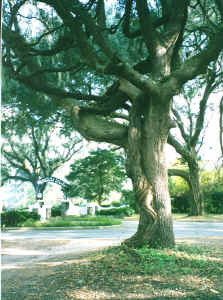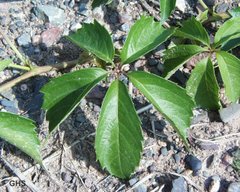 Multitrunk Trees, Woody Vines, and Other Forms
Multitrunk Trees, Woody Vines, and Other Forms
On March 14, 2010 The Eastern Native Tree Society and Western Native
Tree Society switched from discussion lists on Google Groups to a
new discussion list in a Bulletin Board format at:
http://www.ents-bbs.org/index.php Posts made since the
inception of the BBS on march 14, 2010 will be sorted and archived
on the BBS. Click on the link above to go to the equivalent section
on the new BBS. This website will continue to serve as a front end
for the ENTS and WNTS groups. It will continue to serve as a
repository of older posts, and will serve as the host site for
special projects and features that are not well suited for a BBS
format. Please visit the BBs for the latest information and trip
reports.
Key Discussions and Reports
Other Discussions and Reports
Woody Vine Maximums Tables
Woody Vines
Woody vines are generally considered to be a plant that contains woody material but does not stand upright on its own, They tend to climb on the branches and trunks of other plants. There are many of them in the Northeast and Eastern Untied States. Prominent in the woods around PA are Grape Vines, Virginia
Creeper, and Poison Ivy. ENTS periodically measure the girth of some of these. Jess Riddle has reported Grape Vines with girths of 4 feet in the southern US.
In one report on the Ocanaluftee Basin of GSMNP, Jess Riddle
commented: "Grape vines, often over four inches in diameter, frequently tie together all of the canopy layers,
and may be accompanied by Duthcman's pipe vine.

Epworth-by-the-Sea, St. Simons Island, GA , a 4'9" cbh
grape vine growing on a live oak. - photo by Jess Riddle |

Virginia Creeper |
How should these be measured? Where possible try to find the rooted end and measure the girth 4.5 feet from the end of the vine, and the obvious thickening at branching points should also be avoided.
If the rooted end is not located a measurement anywhere along the
length of the vine will suffice. There is very little data on Grape
(Vitus sp.) and other vine species. The are significant as secondary species in many of our woods. They can a a major component in may area, as most of you know who have ever tried to work their way through a grape thicket. Will Blozan reports that "The “tallest” species I have encountered are Virginia creeper and Dutchman’s pipe, both over 120’. I recorded VA creeper at 130.5 feet in one of the Tsuga Search trees I
climbed." In one report on the Ocanaluftee Basin of GSMNP,
Jess Riddle commented: "Grape vines, often over four inches in diameter, frequently tie together all of the canopy layers,
and may be accompanied by Duthcman's pipe vine.
----more----
|